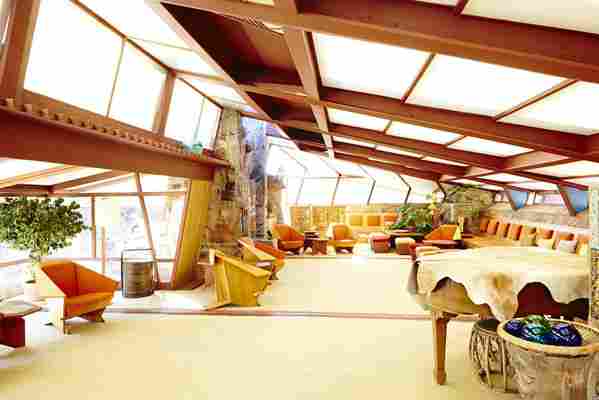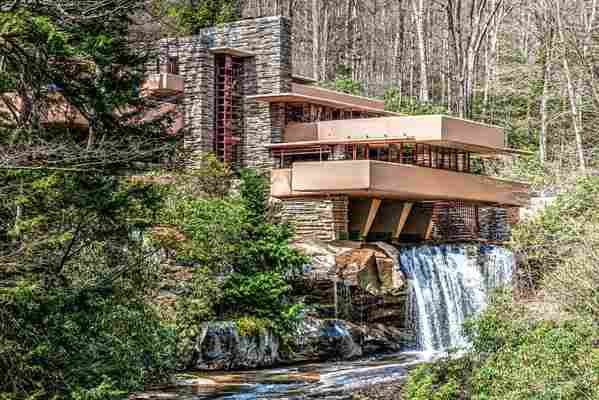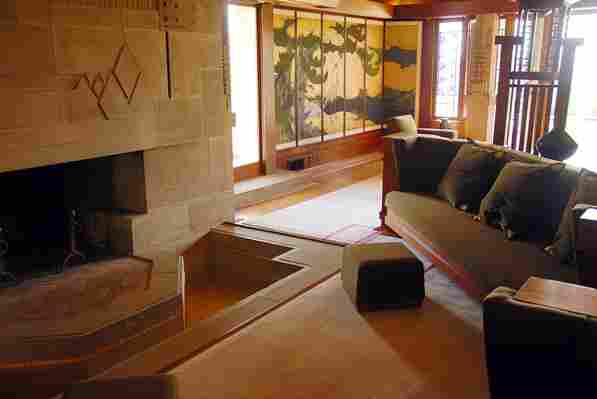You can take an online tour of Frank Lloyd Wright buildings around the United States

There's something about a pandemic lockdown to make architects and designers out of all of us. Perhaps you've begun to look at your home with new eyes after a month or two of social distancing, critically wishing for a little more natural light or a larger kitchen, or access to outdoor space. Or maybe your evening activity du jour is scrolling apartment ads and real estate listings like Goldilocks, keeping an eye out for that fantasy place that looks just right.
Now you can add to your list the possibility of taking virtual tours of the Frank Lloyd Wright creations usually open to the public. Almost two dozen properties are now accessible thanks to local experts and digital docents who know these places down to the last detail, and have filmed online walk-throughs of some of the most famous ( Fallingwater ) to the the more obscure ( Beth Sholom Synagogue ).

“It is precisely at this time, when so many are shut inside, that we need to experience beauty and inspiration. Wright’s works bring people together in harmony with the natural world, reminding us that we are all connected, even when we’re apart,” explained Frank Lloyd Wright Building Conservancy Executive Director Barbara Gordon in a statement .
The #WrightVirtualVisits project is running from April 2 until July 9. Each Thursday at 1pm Eastern/10am Pacific time, participating sites will share a short video tour of another site via social media – turning Frank Lloyd Wright structures across the country into a kind of online block party.
While the tours are free, donations to the various Wright sites are encouraged. Like many museums around the country, the lack of foot traffic is wrecking havoc on these destinations' financials during prime touring season, and many already operate on tight budgets and with the help of volunteers just to cover maintenance of these buildings, many of which are closing in on (or past) their centenary anniversaries.

Although Frank Lloyd Wright is a household name, numerous homes and other structures he designed have been demolished over the years – even during his lifetime. For example, Wright had to rebuild his famous summer home compound, Taliesin , multiple times after a series of fires and tragedies, including one that resulted in the death of his second wife. Most surviving Wright structures rely on public interest (or private ownership) even more than their historical status.
If you do take a tour through a Wright house or two, or continue to contemplate your own abode, you might consider another element of what makes home design so interesting at this particular moment in time – the way major events like a global disease can change our relationships to space and place.
While Wright's signature style was well-established by the 1918 influenza pandemic, its departure from the dark, closed off rooms favored by Victorian architects and emphasis on natural light, airy spaces, and harmony with nature was prescient of the kinds of changes Americans wanted to their living spaces after the deadly flu had passed.
Homes that were easy to clean and felt healthful and even sublime were newly appealing – and its easy to see the huge impact Wright's Prairie Style made on suburbs from coast to coast well into the midcentury. So take a tour, browse classics like Taliesin West and Unity Temple , as well as lesser-known beauties like Gordon House , and contemplate what the next generations of homes might look like after COVID-19 has passed.
You might also like: The quest to photograph every Frank Lloyd Wright design in the world
Architectural marvels of Chicago
These virtual tours are a great way to explore the world without leaving your home

